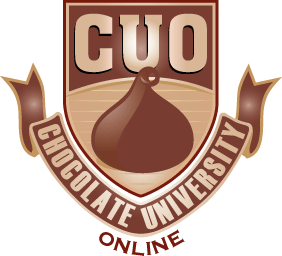Chocolate From The Past
Due to intense love of chocolate, more and more research were done just to trace back its history. While it’s great to just indulge in the goodness of your chocolate, it wouldn’t hurt to know how it made people in the past just as happy as we are now because of it.
Give credit where credit is due. That said, must be given to Fathers, specifically Dominicans, for having the Spanish appreciate chocolate. In 1544, they lured the court by preparing chocolate which was presented by a Kekchi Maya delegation of New World natives.
Because of faith, chocolate spread, making new regions of the world appreciate it. Europeans started to love it, so they made use of chocolate in Christian celebrations. They used chocolate to sustain different aspects of their lives, including physical, economic, as well as spiritual.
Chocolate progressively became a tool for adulation, which is offered for the greater glory of God. As a matter of fact, monks whipped up chocolate. They drank and hoarded it secretly. There was even a room mainly for chocolate drinking. Alphonse de Richelieu, cardinal of Paris, was privileged to be among the first ones to experience chocolate. There was a personal chocolate maker for him.
Chocolate was a reputed “road food” when the church had a mission to California. The thrill of chocolate experience traveled there through Franciscans like Father Junipero Serra. When he left Spain to fulfill his duties in the New World, he brought along with him some chocolates.
Unfortunately, storms made his ship stop at Puerto Rico. When the captain defaulted on his promise to feed them, a local Christian mission provided chocolate for sustenance. Serra reported: “For eighteen days we ate better than in any convent, all drinking chocolate every day.”
The best chocolatiers back then, known as mendiants, always made delicacies. These immortalize the mendicant (beggar) orders-Augustinians, Carmelites, Dominicans, and Franciscans-those that were serving the poor and depend mainly on donations for support. Dried fruits and nuts in the mendicant were symbols for the color of different monastic robes: raisins for Dominicans, hazelnuts for Augustinians, dried figs for Franciscans, and almonds for Carmelites.
Adapted from On the Chocolate Trail: A Delicious Adventure Connecting Jews, Religions, History, Travel, Rituals and Recipes to the Magic of Cacao, published by Jewish Lights.
Categories: chocolate articles Tags: chocolate background, Chocolate History, done, drinking, New World, published
Chocolate and Ancient Medicine
The Aztecs had this thinking that chocolate gave immense strength to their warriors. Ancient doctors used to prescribe it to treat or even cure ailments. In the past, people went for chocolatebecause of its medicinal qualities rather than its yummy taste.
“Chocolate nourishes and preserves health entire, yet causes a pleasant and natural sleep and rest,” wrote Dr. William Hughes, an English physician in 1672. “Drunk twice a day, a man may very well subsist therewith, not taking anything else at all.”
For centuries, chocolate was consumed as a drink, not as a solid bar like we have it now. To the Mayans, Aztecs and Early-Europeans, this frothy drink made out of the cacao bean was a gift from nature. Those who loved chocolate were impressed by chocolate due to its mild stimulant properties. Tt made them feel awake and alert.
“Cacao flowers were ingredients in perfumed baths, and thought to cure fatigue in government officials and others who held public office,” says the Badianus Codex, published in 1552. The Florentine Codex, published in 1590, called for a mixture of cacao beans, maize and herbs to ease fever and panting, and to treat the faint of heart.
In Aztec society, chocolate was intended for priests and the rich. However, soldiers also used to have it for the strength it supposedly gives. In 1529, when the Spanish explorer Hernan Cortes arrived in the court of Aztec ruler Montezuma, he and his fellowmen were astounded by this drink chocolate, which the Aztecs dubbed as “xocoatl” for bitter water. Cortes wrote to King Carlos I of Spain that he had discovered a “drink that builds up resistance and fights fatigue.”
Categories: chocolate articles Tags: ancient chocolate, ancient medicine, aztecs, CHOCOLATE, medicinal chocolate, published, strength, treat, used




